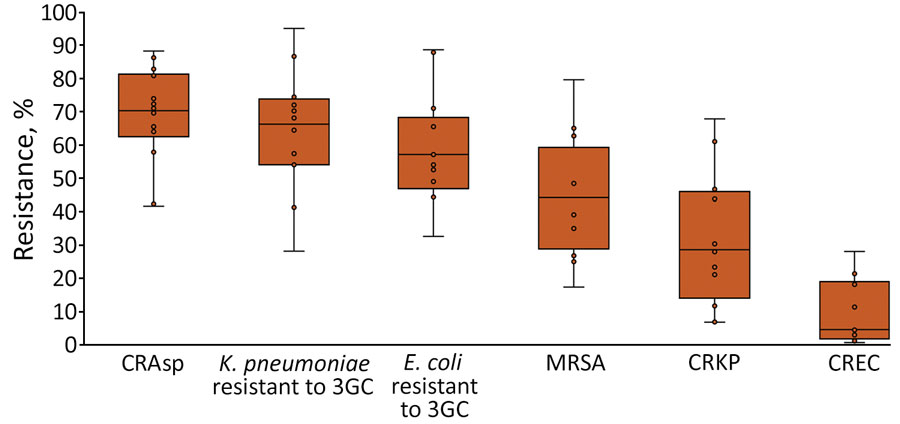Volume 28, Number 4—April 2022
Synopsis
Increasing Antimicrobial Resistance in World Health Organization Eastern Mediterranean Region, 2017–2019
Figure 1

Figure 1. Proportion of patients with bloodstream infections caused by antimicrobial resistant pathogens in 14 World Health Organization Eastern Mediterranean Region countries. Data from the Global Antimicrobial Resistance Surveillance System (https://www.who.int/glass) for 2019. Each dot represents the percentage of patients with resistant organisms in a country. Horizontal lines within boxes indicate medians, box tops and bottoms indicate interquartile ranges (middle 50% of data), and error bars (upper and lower whiskers) represent scores outside the middle 50%. CRAsp, carbapenem-resistant Acinetobacter spp., CREC, carbapenem-resistant Escherichia coli; CRKP, carbapenem-resistant K. pneumoniae; E. coli, Escherichia coli; K. pneumoniae, Klebsiella pneumoniae; MRSA, methicillin-resistant Staphylococcus aureus; 3CG, third-generation cephalosporins.